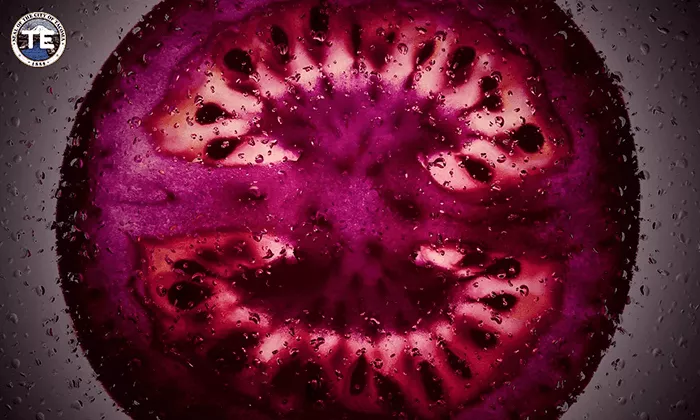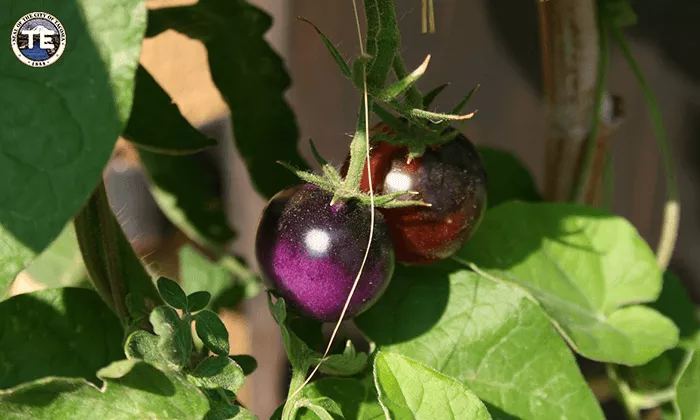The introduction of genetically modified (GM) purple tomatoes has sparked a complex debate across various sectors—from the scientific community to home gardeners and health advocates.

These tomatoes have been engineered to contain high levels of anthocyanins, the same antioxidants found in blueberries and blackberries, purported to offer cancer-fighting properties. However, the controversy begins with the way these tomatoes were introduced to the market and the implications of their genetic modifications on health and ethics.
The Science and Development Behind GM Purple Tomatoes
Developed by Norfolk Plant Sciences, the purple tomato has been modified using genes from the snapdragon plant, enabling it to produce anthocyanins not just in the skin but throughout the fruit. This development aims to bridge the nutritional gap in diets lacking sufficient antioxidants.

Despite these potential health benefits, these tomatoes have entered the market with minimal regulation and testing, raising significant concerns among scientists and consumers about their safety and the transparency of their development process.
Regulatory and Ethical Concerns
The U.S. Department of Agriculture has deregulated the GM purple tomato, stating it poses no significant risk compared to other tomatoes. However, this has not quelled the public’s concern, as the lack of comprehensive safety testing and the potential for cross-contamination with non-GMO crops remain unresolved issues. The rush to introduce these tomatoes into human diets without extensive trials is seen by some as a neglect of scientific ethics, especially considering the irreversible nature of releasing genetically modified organisms into the ecosystem.
Market Impact and Consumer Choices
The arrival of GM purple tomatoes in the market has the potential to alter agricultural practices and consumer choices significantly. While some see this as a step forward in biotechnology, offering a new variety of “superfood,” others view it as an unnecessary risk, with natural alternatives already available. The debate extends to the labeling of GM foods and the right of consumers to know what is in their food, influencing decisions at grocery stores and impacting the trust between consumers and food producers.
The Broader Implications for Global Agriculture
The cultivation of GM purple tomatoes is part of a broader trend towards genetically modified crops, which proponents argue can help address food security by introducing crops with enhanced nutritional qualities or increased resistance to pests and diseases. However, this approach comes with concerns about biodiversity, environmental health, and the long-term impacts on global food systems.
As the debate over GM purple tomatoes continues, it becomes clear that a balanced approach is needed, one that considers both the scientific benefits and the potential risks. Ensuring rigorous testing, transparent regulatory processes, and clear labeling could help bridge the gap between biotechnological advances and consumer rights, ultimately leading to informed choices about the foods we grow and consume.
Considerations on Health Implications
The introduction of genetically modified (GM) purple tomatoes brings forth potential health considerations that merit careful attention. While these tomatoes are engineered to enhance antioxidant levels, the alteration could also introduce unintended compounds, possibly leading to new allergens or novel toxins.
The exact impact of these changes on human health remains under-explored, highlighting the need for extensive testing to ensure safety. Additionally, the genetic material from non-native species used in these tomatoes could theoretically interact with human or animal microbiomes, though such risks are often considered low.
Furthermore, the environmental implications of cultivating GM crops indirectly affect human health by potentially disrupting ecosystems and reducing biodiversity. This environmental impact can alter natural resources and food quality over time, stressing the importance of holistic assessments to evaluate both the direct and indirect health effects of GM foods like purple tomatoes.
As the scientific community and regulators work to understand these impacts, transparent communication and rigorous peer-reviewed research are essential to guide informed consumer choices and policy decisions.

Carl Riedel is an experienced writer and Open Source Intelligence (OSINT) specialist, known for insightful articles that illuminate underreported issues. Passionate about free speech, he expertly transforms public data into compelling narratives, influencing public discourse.













